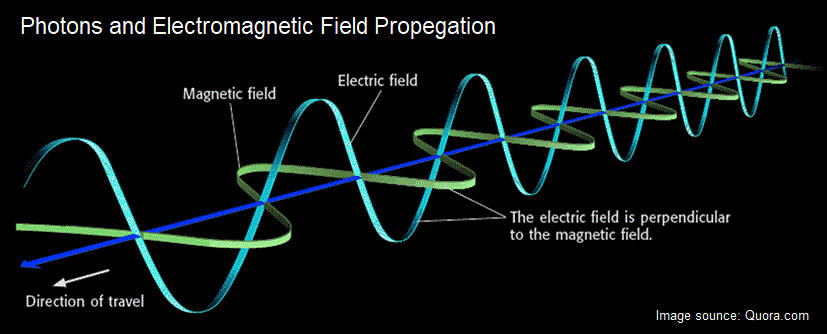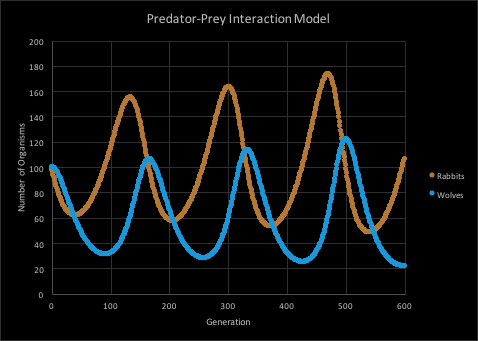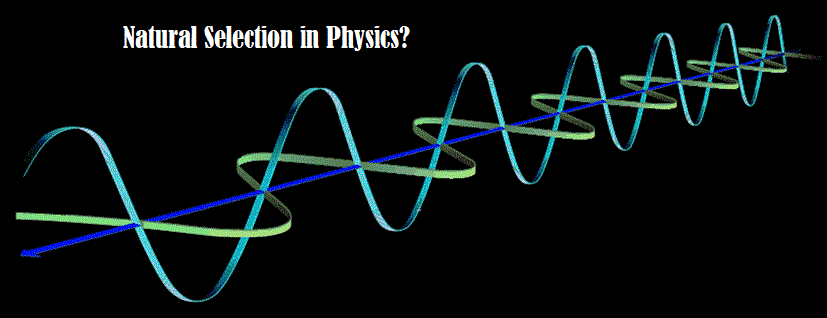Scientists have found in recent decades that Darwinian natural selection, or ordinary survival of the fittest, is at work throughout both quantum physics and physics as a whole. They’ve found that it operates among subatomic particles via a process called einselection (Zurek 2003).[1] They’ve also discovered that it operates among organic molecules via a process called chemical selection (Rebek 1997). Now, they’re finding that it operates among phenomena of every scale via universal selection, or the survival of the fittest systems and elimination of the weakest systems (Kelley 2013).
Theoretical physicist Wojciech Zurek of the Los Alamos National Laboratory, for example, is a leading authority on quantum theory and even founded ‘quantum Darwinism’ in 2003. This growing field explains the emergence of classical physics from particle physics. It holds that throughout the proliferation of possible quantum states among subatomic particles, many of these states are selected against, leaving a stable pointer state, preserved via natural selection. Moreover, Zurek’s principle of einselection, or environment-induced superselection, clarifies the collapse of wave functions, further explaining the emergence of our classical reality from our otherwise-abstract quantum reality.
Researcher John Campbell has since built upon Zurek’s work in his books Universal Darwinism: the path to knowledge (2011) and Darwin Does Physics (2015). He holds that information is retained within internal models that allow systems to maintain their own innate responses to the environment. Like genetics, these models can be both built upon and refined over time. Although it’s unclear where Campbell draws the line with regard to which phenomena selection ultimately acts upon, he makes considerable contribution to our understanding of how this principle operates in both physics and quantum physics.
In his book The Origin of Phenomena, naturalist D. B. Kelley too has shown selection to be operative in physics. He argues that all natural phenomena are products of their environment, just like living things. Kelley explains, for example, that the two superimposed sinusoidal waves (shown below) that define electromagnetic radiation and their waves are held in check via Faraday’s law and Maxwell’s addition to Ampere’s law. This occurs via feedback from each law, or mechanism, allowing the waves to obey these sinusoidal functions with the utmost consistency. Kelley is thus among the first to assert that even subatomic particles follow from adaptive, regulatory control via their interactions with the environment.

Similarly, he demonstrates that this is the very same type of self-regulation that takes place among rabbit and wolf populations. As rabbits multiply, wolves multiply as well since there are more rabbits to eat. As wolf populations increase, however, they eat so many rabbits that rabbit populations start to fall. This, in turn, causes wolf populations to crash as well. Once they have diminished enough, rabbit populations are able to climb, starting the process over again.

Thus, we see that selection isn’t just responsible for evolution and stability among individuals, as it is also responsible for the overall stability of entire populations. Although individuals are of course naturally selected one by one, this results in both rabbits and wolves maintaining what are on average extremely stable populations. In other words, although they too involve systems, or populations, that fluctuate markedly, their populational equilibrium is still maintained through adaptive regulatory control via selection in every regard.
Kelley reminds us that star formation too involves regulatory feedback induced by the environment. Stars form when a region of space grows cold due to the death of stars, and their production slows once these regions are warm due to the newly formed stars. Like a thermostat, then, star formation can be switched both on and off via ambient changes in temperature.
James Geach of the Centre for Astrophysics Research has shown that a quasar—or a supermassive black hole surrounded by a luminescent, gaseous accretion disk—is also governed via stable regulatory control. He states,
“Quasar feedback provides a mechanism for the… black hole to affect star formation across an entire galaxy, owing to the colossal amount of energy liberated from the gravitational potential energy of surrounding gas clouds… Through this cycle of feedback and accretion, the blackhole and galaxy around it are locked in a state of self-regulation, and this concept of regulatory feedback is now a central feature of our picture of how galaxies evolve. Without it, models and simulations of galaxy formation cannot reproduce the correct distribution of galaxies we see around us today.”[1]
Geach has thus shown that star and galaxy formation can both be governed via a well-balanced combination of positive feedback, negative feedback, and accretion.
Exploring adaptive regulatory control at many other scales in physics, Kelley predicts that all natural systems involve regulatory feedback, just like species themselves. In short, such measures allow natural systems to maintain their very being in a highly interactive cosmos. After all, without such adaptive measures, their very existence would be highly unlikely in an otherwise-chaotic universe.
For these reasons and more, scientists are now finding that there are many Darwinian processes that are at work in nature that are well beyond the traditional bounds of biology. They are discovering that fundamental mechanisms such as regulatory control, selection, and therefore adaptation are prevalent even in the physical sciences. In fact, the more we learn about nature’s small-scale systems, her large-scale systems, and everything in between, the more we find that the fundamental devices responsible for all such existence are the same as those responsible even for life. In other words yet, the more we explore the new and growing science of Universal Darwinism, the more we find that we, as living things, are not so different from our universe at all.
Learn more at universalselection.com
